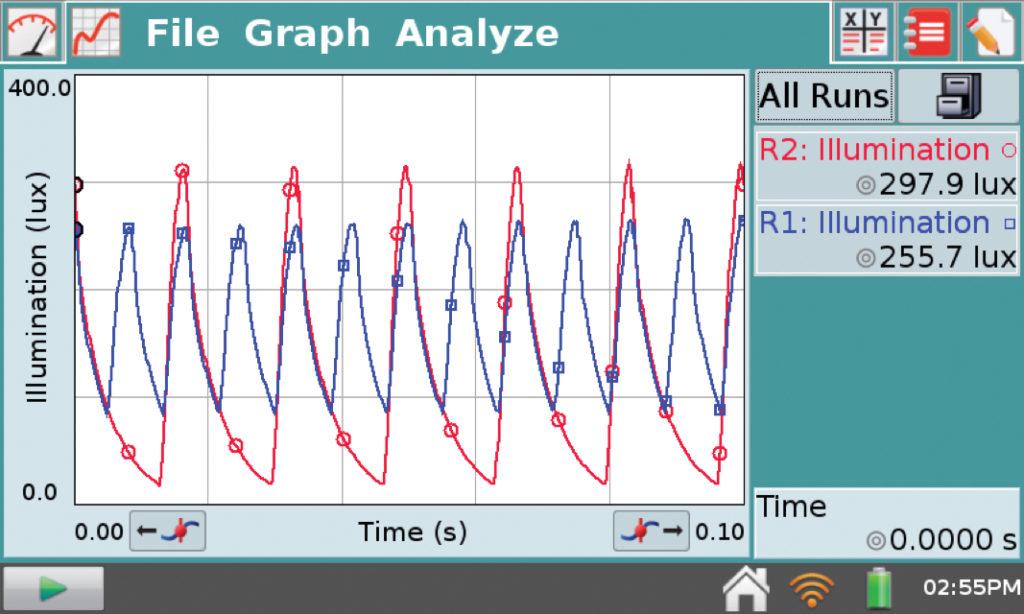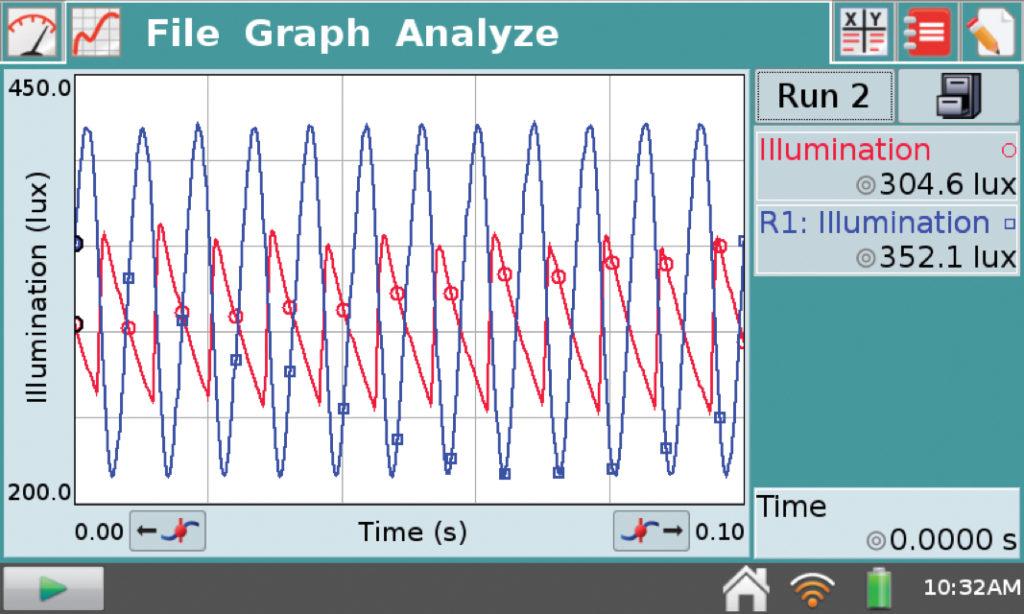By John Gastineau, Vernier Staff Scientist and Partner
There’s a table lamp in my house that flickers annoyingly. I set out to find out what it is doing.
The lamp has an LED bulb, as it is in a location I like to keep lit all evening. The inexpensive fixture has a built-in dimmer switch with two positions: full-on and low. When set to low, the light flickers noticeably. What is the nature of the intensity variation? Is there some design aspect of the lamp that makes it more noticeable?
Sensor-based data collection can reveal things that happen too quickly to observe directly. I used this capability to understand the lamp behavior. To detect the intensity variation, I used a Vernier Light Sensor and configured a LabQuest for a 0.1 s duration and a 5000 points/s sampling rate. The collection rate was overkill, but I’d be sure to see details. I collected data for both lamp settings.
At full brightness, the lamp brightness changes at a 120 Hz rate. That’s too fast to see easily. But at the lower setting, every other cycle is missing, so the lamp flickers at a visible 60 Hz. The lamp must pass current one way in the low setting. Note that I didn’t take care to hold the Light Sensor in the same position for the two runs, so the peak intensity happened to be higher for the low position.

For a comparison, I did the same measurement with a more expensive LED bulb with a better dimmer. That lamp has no visible flicker at any brightness level, and indeed, the LabQuest data showed an unchanged 120 Hz variation at any brightness.

Now it’s clear why the inexpensive lamp flickers so much at the low setting. In this fixture, an incandescent bulb would vary in light output much less and thus not annoy, but the energy savings is important for an all-night lamp.
